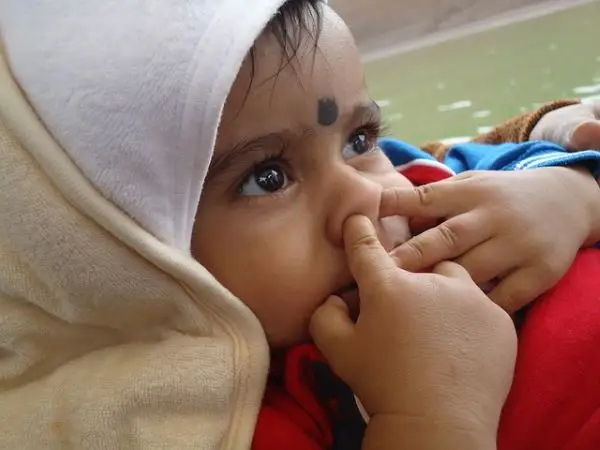As a parent, you might have heard of RSV (Respiratory Syncytial Virus), but what is it really, and why does it matter for kids? This common virus can range from mild cold-like symptoms to severe respiratory issues, especially in infants and young children. It might sound overwhelming, but with the right information and precautions, you can protect your child and handle RSV if it strikes. Let’s dive into everything you need to know about RSV in kids.
Also, read: Now Know All About Bronchiolitis in Kids: A Common Respiratory Disease in Kids
A Brief History of RSV
Did you know that RSV was first identified in 1956? Researchers discovered it while studying chimpanzees with respiratory infections. Since then, RSV has been recognized as a major cause of respiratory illnesses in children worldwide. Though it’s seasonal—peaking in fall and winter—RSV doesn’t take a vacation and remains a leading cause of hospitalization for infants.
Fast Facts About RSV
- RSV is highly contagious and spreads through droplets when an infected person coughs or sneezes.
- It can survive on surfaces for several hours. Imagine touching a doorknob or toy, then touching your face—that’s how quickly it can spread.
- Most children get RSV by the age of 2, but for some, it can lead to serious complications like bronchiolitis or pneumonia.
- Premature babies and kids with weakened immune systems are at higher risk of severe RSV. (Source)
Symptoms to Watch For
RSV can start innocently, like any other cold, but it’s important to recognize when it might be more serious. Here are some common symptoms:
- Mild symptoms:
- Runny nose
- Coughing
- Low-grade fever
- Sneezing
- Decreased appetite
- Severe symptoms:
- Wheezing
- Rapid or difficulty breathing
- Bluish tint to lips or fingernails (a sign of low oxygen levels)
- Extreme fatigue or irritability
If your child’s symptoms worsen or you notice trouble breathing, don’t wait—seek medical care immediately. (Source)
Why Is RSV Dangerous for Kids?
You might wonder, “Why is this common virus such a big deal?” The problem is that RSV can cause inflammation in the small airways of the lungs (bronchiolitis), making it harder for young children to breathe. Their smaller airways are more prone to blockages, and their immune systems might not fight off infections as efficiently as older kids or adults.
Precautions and Prevention
Here’s the good news: there are practical steps you can take to reduce your child’s risk of getting RSV:
- Frequent handwashing: Encourage kids to wash their hands with soap and water for at least 20 seconds.
- Clean surfaces: Regularly disinfect toys, doorknobs, and other high-touch areas.
- Limit exposure: Keep your child away from crowded places during RSV season, especially if they’re an infant.
- Cover coughs and sneezes: Teach kids to use their elbow, not their hands.
- Avoid smoke exposure: Secondhand smoke can worsen respiratory issues.
- Breastfeeding: For infants, breast milk provides essential antibodies that boost immunity. (Source)
Preventive Tests and Diagnosis
While there’s no routine screening for RSV, doctors can perform certain tests if they suspect it. Here are the common ones:
- Nasal swab test: A quick and painless test to detect RSV in mucus samples.
- Chest X-ray: If your child shows severe symptoms, an X-ray might be used to check for lung inflammation.
- Blood tests: These can measure oxygen levels and detect any related infections.
Early diagnosis can prevent complications and guide treatment, so don’t hesitate to consult your pediatrician if symptoms seem unusual or severe.
Home Care Tips
Not every case of RSV requires hospitalization. In fact, most children recover with proper care at home. Here are some tips to make your child more comfortable:
- Hydration is key: Keep fluids flowing! Dehydration can worsen symptoms, so offer water, breast milk, or formula frequently.
- Humidifiers: A cool-mist humidifier can help soothe irritated airways and ease breathing.
- Saline drops and suction: For babies, saline nasal drops and a suction bulb can clear stuffy noses.
- Fever management: Use doctor-recommended fever reducers, like acetaminophen or ibuprofen. Always double-check dosages.
- Rest, rest, rest: Let your little one’s body focus on healing. Avoid overstimulation and encourage naps.
When to See a Doctor
Let’s consider—how do you know when it’s time to get professional help? If your child experiences any of the following, contact your pediatrician:
- Rapid or labored breathing
- Persistent high fever
- Signs of dehydration (e.g., no wet diapers for 8+ hours)
- Extreme lethargy or difficulty waking up
- Blue or gray skin coloration
FAQs about RSV
Q: Can RSV be prevented entirely?
A: While you can’t eliminate all risk, good hygiene and precautions during peak seasons greatly reduce the chances.
Q: Is there a vaccine for RSV?
A: As of now, there isn’t a widely available RSV vaccine for children, but research is underway. However, high-risk infants may receive preventive injections like palivizumab.
Q: Can older kids or adults get RSV?
A: Yes! RSV isn’t just a children’s illness. In older kids and healthy adults, it usually causes mild symptoms, but it can be severe for vulnerable groups like the elderly.
The Bigger Picture
It’s easy to feel anxious when your child is sick, but knowing about it can help you act confidently. By understanding the symptoms, taking preventive steps, and providing supportive care, you’re already ahead of the game.
RSV might be common, but it doesn’t have to be scary. With awareness and preparation, you can keep your little one safe and healthy through the season.





